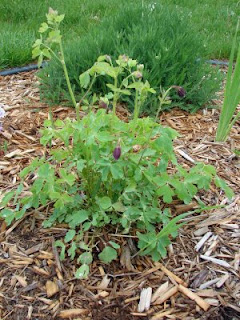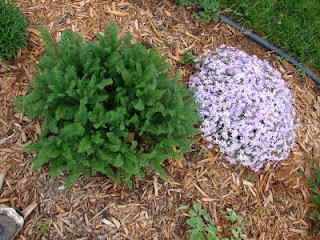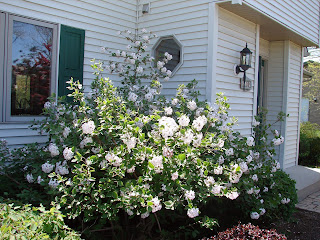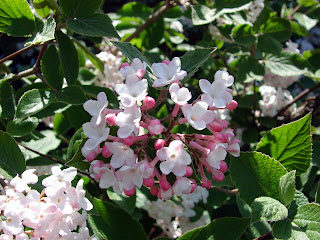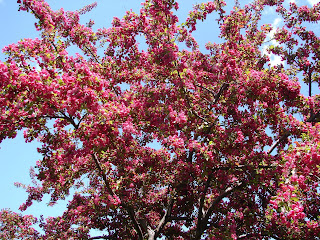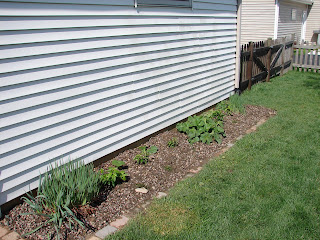Last fall, after one of the rain storms, our patio fire pit was filled with water. We emptied it out and watched as the water ran straight back to the house. This, along with a couple low spots, was enough to deem it worthy to put forth the effort the following year to re-level the patio. Anticipating that it was going to take a day or two to finish, we planned to attack this project over Memorial Day weekend.
Thursday I did investigation as to what would be involved in laying a paver patio. I used the following sites as resources for instructions to install a paver patio:
1.) http://www.hometime.com/Howto/projects/patios/patios_1.htm
2.) http://www.hamiltonparker.com/hp%20files/DIY%20Paver%20%20Manual.pdf
3.) http://www.ehow.com/how_4589649_paver-patio-detailed-doityourself-instructions.html
4.) http://www.belgard.biz/howtoinstall.htm
I decided to take off on Friday to get a good jump on the project. I figured that I could get a good start on the project if not almost complete it in one day. Ambitious, yes, but it's good to have a goal to reach. So away we go...
DAY 1:It took about 3.5 hours to remove the pavers and stack them off to the side:

Once the pavers were removed, I found that there was a 3-4 inch layer of sand between the pavers and the gravel base. I decided to remove the sand to get down to the gravel base so that I could reset the the base with a good layer of minus crushed limestone per the instructions from the sites noted above. By the end of the day, I got the sand removed so that there was only a good gravel base. Since it was late in the day, I finished with renting a plate compactor from Home Depot for the upcoming work on the following day.
Oh...perhaps this is a good moment to mention that I had forgot that the patio is about 20' x 12'(240 square feet)...so much for getting this done in one day.
Day 2:
After a good night's sleep, I was up and ready to go. I made one quick trip to Home Depot for a couple more bags of crushed limestone since it had, and was finishing raining the early part of the morning. Before laying out the limestone, considering I had taken off the top layer of sand (and sand-gravel mix), I made a couple initial passes with the compactor to set the base level.

I laid out about a 3" layer of crushed limestone and went over it with a number of passes with the plate compactor. Everything turned out great with the compactor except for the last pass or so because a bit of the limestone had stuck and hardened to the bottom of the plate compactor. Tip to the readers, if the compactor isn't providing a smooth result, there may be debris stuck or collecting on the bottom of the plate.

After compacting the layer of crushed stone, and before laying the sand, I put down a weed blocker/stone stabilizer. I'm not sure if this is actually going to do anything, but I figured I'd give it a try; if it works, great, else no big deal.
To lay down the sand, I used a couple of rods about 1" thick and a steel 2x4 to level out a layer of sand evenly across the patio. This was a time consuming effort as I had decided to reused the sand that was dug up from day 1. What took so long was that the layer of gravel had been mixed in with the sand. Before being able to lay down the sand, I had to rake the gravel stones out of the sand. I got most of the them, but certainly there was quite a bit that I missed. As I used the beam to level the layer of sand, and stone caught at the top would be dragged causing a crease in the top layer. So, I'd have to remove the stone, re-add sand, and re-level. As you can imagine, this added considerable time.

We slowly worked the rods down from one end of the patio to the other to ensure an even level of sand. Eventually once the rods were removed, as we layed the pavers, we filled in the grove with sand. It was about 1:00 pm on Saturday that we finally got around to laying the pavers.
We got close, but we didn't finish the work on day 2. I had to take back the plate compactor and Cathy ran into some troubles with the last bit of laying the pavers. So for day 3, I had to finish things off laying the pavers. Overall, it was very much like Legos laying out the pavers...until the very end. I made it all the way to the corner of the curve with just one tiny hole left to fill. The problem, I didn't have any pavers which fit the hole. So, the Legos now turned into a puzzle. Moving on brick here, one brick there, I eventually worked my way all the way back to the house when I finally got all the pavers to fit. I of course checked the level of things to make sure the patio was pitched away from the house and sure enough it was.

The last step was to sweep the sand into the spaces between the pavers. The websites had mentioned that one should use the plate compactor and go back over the pavers once they were laid so that they were set, but rather than renting the plate compactor again, I used a hand tamper and tamped the pavers into place whilst sweeping over the patio to fill in between the pavers. I'm not sure if that's going to cost me in the long run, but with what energy I had at that point in time, it seemed like the most correct decision.
Not much left to do on Monday except for cleanup. There was still a large pile of mixed sand and gravel on the driveway which I shoveled up and moved it to the back of the yard and started a path into the woods. I swept some of the remaining sand in between some spots that were still lacking. Over the next couple rainfalls or so, I'll have to do this a couple times.
I don't have a picture of the final look of the patio, but that was mainly due to the low energy level after all of the work from the weekend. No worries though...coming soon :)
Update: Here is the finished patio!












